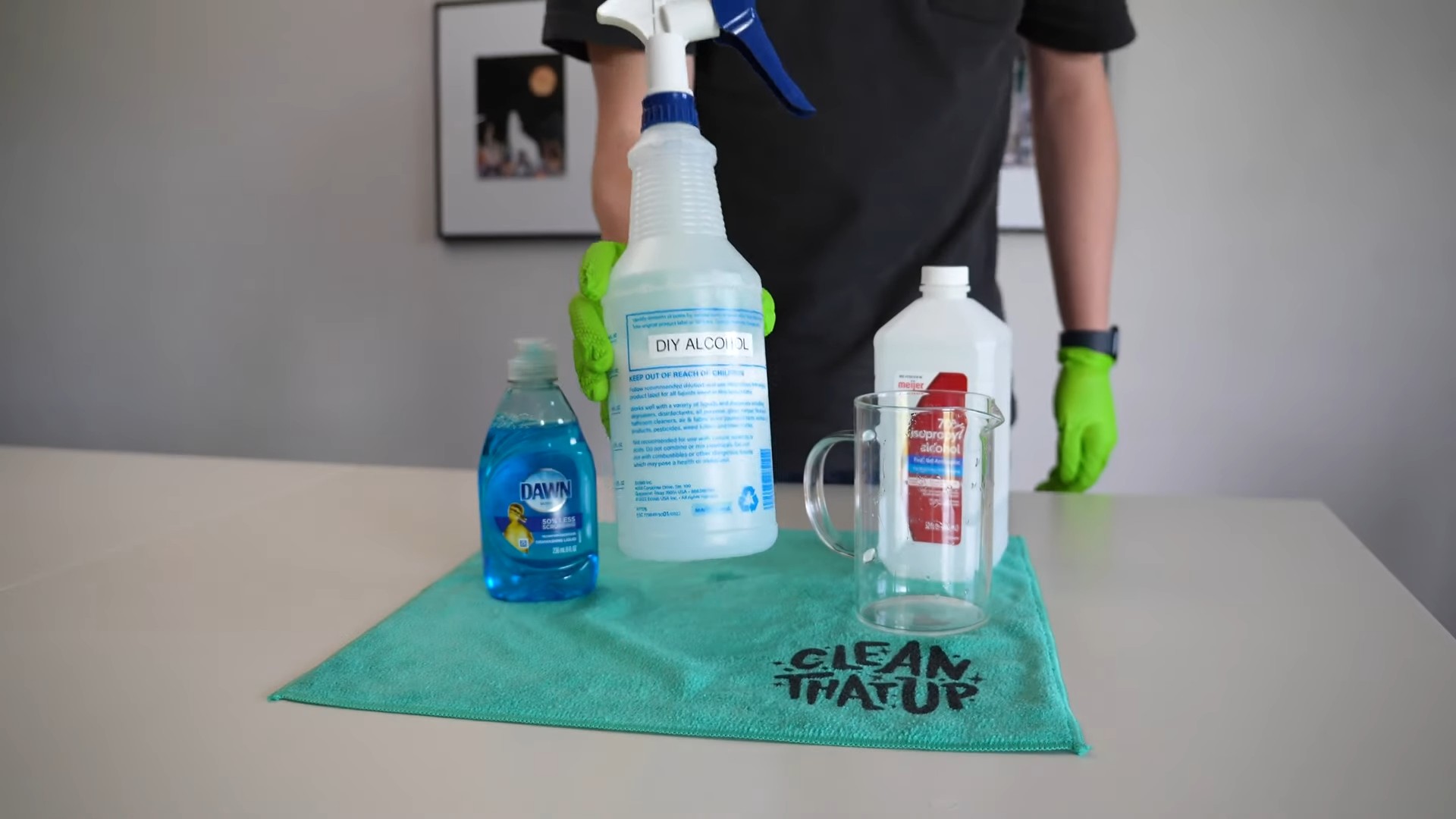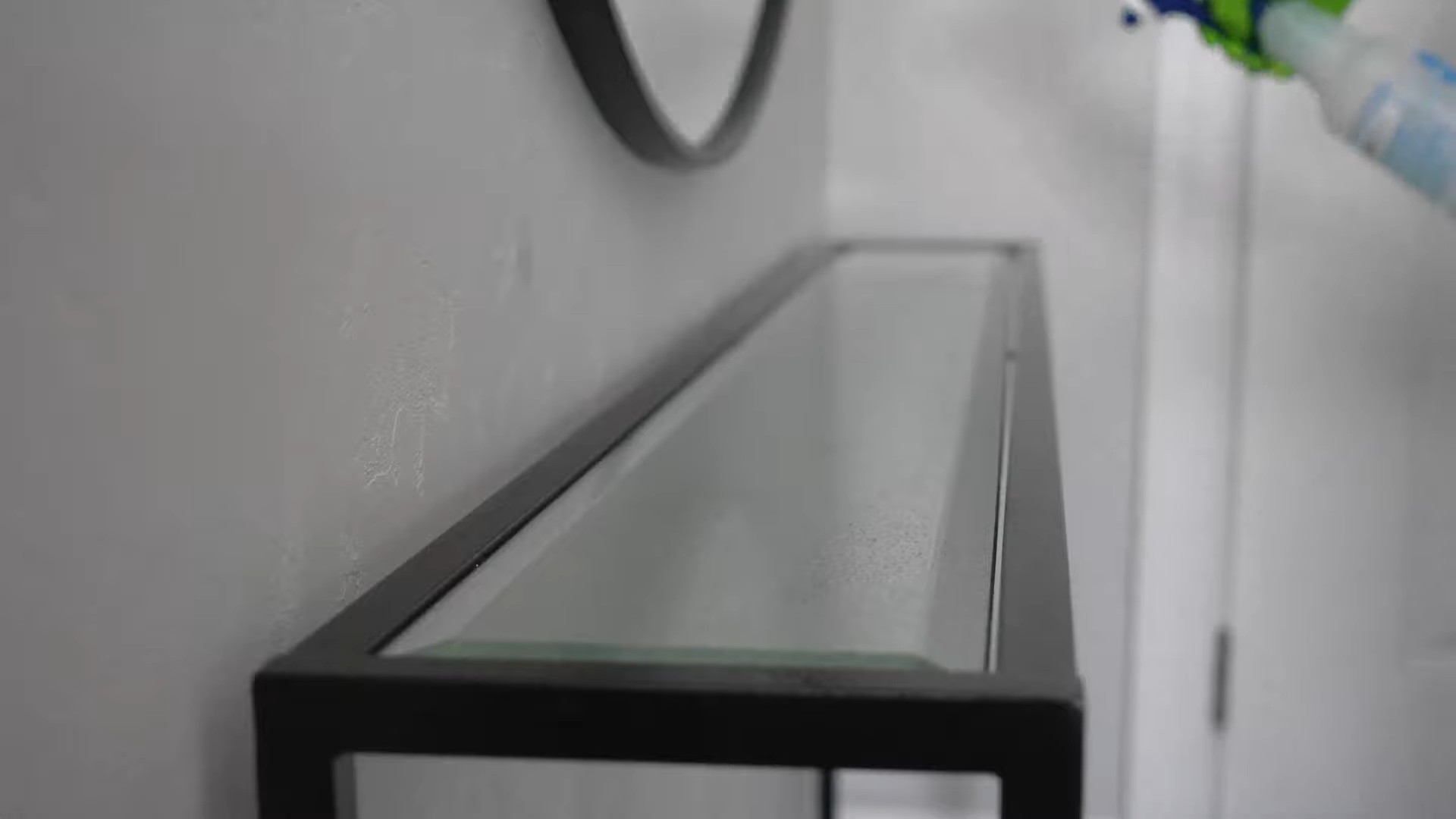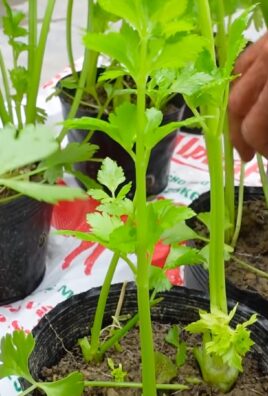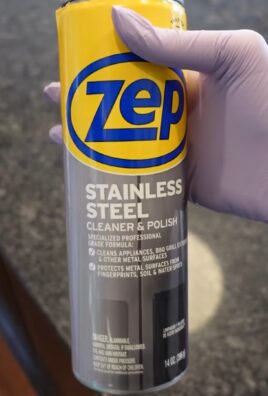Cleaning with alcohol tips – who knew such a simple substance could be so powerful? I’m constantly amazed by the versatility of rubbing alcohol, and I’m excited to share some of my favorite DIY cleaning hacks that will not only save you money but also keep your home sparkling.
For centuries, alcohol has been used for its antiseptic properties, dating back to ancient civilizations who utilized fermented beverages for wound care. While we’ve come a long way from those early days, the fundamental principle remains the same: alcohol is a fantastic disinfectant. In today’s world, where we’re all more conscious of germs and cleanliness, having effective and affordable cleaning solutions is more important than ever.
Let’s face it, commercial cleaning products can be expensive and often contain harsh chemicals that I’d rather avoid. That’s where these cleaning with alcohol tips come in! I’ll show you how to create your own effective cleaners for everything from disinfecting surfaces to removing stubborn stains. These DIY tricks are perfect for anyone looking to simplify their cleaning routine, save some cash, and create a healthier home environment. Get ready to unlock the cleaning power of alcohol!

DIY Cleaning Powerhouse: Unleashing the Magic of Rubbing Alcohol
Hey there, fellow DIY enthusiasts! I’m about to share one of my absolute favorite cleaning hacks: using rubbing alcohol (isopropyl alcohol) to tackle a surprising number of household chores. Seriously, this stuff is a game-changer. It’s inexpensive, readily available, and incredibly versatile. Forget those expensive, chemical-laden cleaners – rubbing alcohol can do it all, and often better!
Why Rubbing Alcohol? The Benefits Unveiled
Before we dive into the nitty-gritty, let’s talk about why rubbing alcohol is such a cleaning superstar.
* Disinfecting Power: Rubbing alcohol is a potent disinfectant, killing germs, bacteria, and viruses on contact. This makes it perfect for sanitizing surfaces, especially in the kitchen and bathroom.
* Fast Evaporation: Unlike water, rubbing alcohol evaporates quickly, leaving surfaces dry and streak-free. This is crucial for cleaning electronics and delicate items.
* Grease-Cutting Ability: It’s a fantastic solvent, meaning it can dissolve grease, grime, and sticky residues with ease.
* Mold and Mildew Fighter: Rubbing alcohol can help prevent mold and mildew growth, especially in damp areas.
* Affordable and Accessible: You can find rubbing alcohol at any drugstore or supermarket, and it’s significantly cheaper than many specialized cleaning products.
Safety First! Important Precautions
Before we get started, let’s cover some essential safety precautions:
* Ventilation is Key: Always work in a well-ventilated area when using rubbing alcohol. Open windows or turn on a fan to ensure proper airflow.
* Avoid Contact with Skin and Eyes: Rubbing alcohol can be irritating to the skin and eyes. Wear gloves and eye protection if you’re sensitive or working with large quantities.
* Keep Away from Heat and Flames: Rubbing alcohol is flammable, so keep it away from open flames, sparks, and heat sources.
* Test on an Inconspicuous Area: Before cleaning a large surface, test the rubbing alcohol on a small, hidden area to ensure it doesn’t damage or discolor the material.
* Keep Out of Reach of Children and Pets: Store rubbing alcohol in a safe place, out of reach of children and pets.
The Ultimate Cleaning Guide: Rubbing Alcohol to the Rescue!
Now for the fun part! Here’s a breakdown of how to use rubbing alcohol to tackle various cleaning tasks around your home.
1. Sanitizing Electronics: Phones, Tablets, and Keyboards
Our electronic devices are breeding grounds for germs. Here’s how to safely sanitize them with rubbing alcohol:
1. Gather Your Supplies: You’ll need rubbing alcohol (70% isopropyl alcohol is ideal), a microfiber cloth, and cotton swabs.
2. Power Down: Turn off your device and unplug it from any power source.
3. Dampen the Cloth: Lightly dampen the microfiber cloth with rubbing alcohol. Do not saturate the cloth! You want it damp, not dripping.
4. Wipe Down the Surface: Gently wipe down the surface of your device with the damp cloth. Pay attention to areas you touch frequently, like the screen, buttons, and edges.
5. Clean Hard-to-Reach Areas: Use a cotton swab dipped in rubbing alcohol to clean crevices and hard-to-reach areas, like around buttons and ports.
6. Let it Air Dry: Allow the device to air dry completely before turning it back on. The alcohol will evaporate quickly.
2. Streak-Free Window and Mirror Cleaning
Say goodbye to streaks and smudges! Rubbing alcohol makes an excellent window and mirror cleaner.
1. Mix Your Solution: In a spray bottle, combine equal parts rubbing alcohol and water. You can also add a few drops of dish soap for extra cleaning power.
2. Spray and Wipe: Spray the solution onto the window or mirror.
3. Wipe with a Microfiber Cloth: Wipe the surface with a clean, dry microfiber cloth. Use a circular motion to remove dirt and grime, then wipe in straight lines for a streak-free finish.
4. Buff to Shine: For an extra-sparkly finish, buff the surface with a dry microfiber cloth.
3. Disinfecting Kitchen Surfaces: Countertops, Sinks, and Cutting Boards
Keep your kitchen germ-free with rubbing alcohol.
1. Clean the Surface: First, clean the surface with soap and water to remove any visible dirt and debris.
2. Spray with Rubbing Alcohol: Spray the surface with rubbing alcohol (70% isopropyl alcohol is recommended for disinfecting).
3. Let it Sit: Allow the rubbing alcohol to sit on the surface for at least 30 seconds to kill germs.
4. Wipe Clean: Wipe the surface clean with a clean cloth or paper towel.
Important Note: Avoid using rubbing alcohol on porous surfaces like unsealed granite or marble, as it can damage the finish.
4. Removing Permanent Marker Stains
Yes, you read that right! Rubbing alcohol can often remove permanent marker stains from various surfaces.
1. Test First: As always, test the rubbing alcohol on an inconspicuous area first to ensure it doesn’t damage the surface.
2. Apply Rubbing Alcohol: Apply rubbing alcohol directly to the stain using a cotton ball or cloth.
3. Blot the Stain: Gently blot the stain with a clean cloth, working from the outside in. Avoid rubbing, as this can spread the stain.
4. Repeat as Needed: Repeat the process until the stain is removed.
5. Clean with Soap and Water: Once the stain is gone, clean the area with soap and water to remove any remaining rubbing alcohol residue.
5. Cleaning and Disinfecting Bathroom Fixtures: Toilets, Sinks, and Showers
Keep your bathroom sparkling clean and germ-free with rubbing alcohol.
1. Toilet Bowl Cleaning: Pour 1/2 cup of rubbing alcohol into the toilet bowl. Let it sit for 30 minutes, then scrub with a toilet brush and flush.
2. Sink and Shower Cleaning: Spray rubbing alcohol onto sinks, showers, and other bathroom fixtures. Let it sit for a few minutes, then wipe clean with a cloth or sponge.
3. Showerhead Cleaning: To remove mineral buildup from your showerhead, soak it in a bag filled with rubbing alcohol for a few hours or overnight. Rinse thoroughly before using.
6. Freshening Up Shoes
Rubbing alcohol can help eliminate odors and kill bacteria in your shoes.
1. Spray the Inside: Spray the inside of your shoes with rubbing alcohol.
2. Let Them Air Dry: Allow the shoes to air dry completely. The alcohol will evaporate, taking the odors with it.
7. Removing Sticky Residue: Labels, Tape, and Gum
Say goodbye to sticky messes! Rubbing alcohol is a fantastic solvent for removing sticky residue.
1. Apply Rubbing Alcohol: Apply rubbing alcohol directly to the sticky residue using a cotton ball or cloth.
2. Let it Sit: Allow the rubbing alcohol to sit for a few minutes to soften the residue.
3. Scrape Away: Use a scraper or cloth to gently scrape away the residue.
4. Clean with Soap and Water: Clean the area with soap and water to remove any remaining rubbing alcohol residue.
8. Cleaning Jewelry
Give your jewelry a sparkling clean with rubbing alcohol.
1. Soak Your Jewelry: Place your jewelry in a small bowl filled with rubbing alcohol.
2. Let it Soak: Let it soak for 10-15 minutes.
3. Rinse and Dry: Rinse the jewelry with water and dry it with a soft cloth.
Important Note: Avoid using rubbing alcohol on delicate gemstones or pearls, as it can damage them.
9. Removing Hairspray Buildup from Hairbrushes
Keep your hairbrushes clean and free of product buildup with rubbing alcohol.
1. Remove Hair: Remove any loose hair from the brush.
2. Soak the Brush: Soak the brush in a mixture of rubbing alcohol and warm water for 30 minutes.
3. Rinse and Dry: Rinse the brush with water and let it air dry completely.
10. Preventing Mold and Mildew Growth
Rubbing alcohol can help prevent mold and mildew growth in damp areas like bathrooms and kitchens.
1. Spray the Area: Spray rubbing alcohol onto surfaces prone to mold and mildew growth, such as shower walls, tiles, and grout.
2. Let it Air Dry: Allow the rubbing alcohol to air dry completely.
3. Repeat Regularly: Repeat this process regularly to prevent mold and mildew from returning.
Final Thoughts: Embrace the Cleaning Power of Rubbing Alcohol!
I hope this guide has inspired

Conclusion
So, there you have it! This simple yet incredibly effective DIY cleaning with alcohol trick is a game-changer for anyone looking to maintain a sparkling clean home without relying on harsh chemicals or breaking the bank. We’ve explored how isopropyl alcohol, readily available and surprisingly versatile, can become your secret weapon against grime, germs, and lingering odors.
Why is this a must-try? Because it’s efficient, economical, and environmentally conscious. Think about it: you’re reducing your reliance on single-use cleaning wipes and sprays, minimizing plastic waste, and creating a healthier environment for yourself and your family. Plus, the speed and effectiveness of alcohol cleaning are truly remarkable. Stubborn stains that once seemed impossible to remove can be tackled with ease, leaving surfaces gleaming and sanitized.
But the beauty of this DIY approach lies in its adaptability. Feel free to experiment with different concentrations of alcohol depending on the task at hand. For delicate surfaces, a lower concentration (around 70%) is ideal, while tougher jobs might benefit from a higher concentration (90% or above). You can also infuse your cleaning solution with essential oils for a pleasant aroma. A few drops of lavender, lemon, or tea tree oil can transform your cleaning routine into a therapeutic experience.
Consider these variations to tailor the cleaning solution to your specific needs:
* **For streak-free windows and mirrors:** Mix equal parts isopropyl alcohol and water in a spray bottle. Add a teaspoon of white vinegar for extra shine.
* **For disinfecting electronics:** Use a microfiber cloth lightly dampened with 70% isopropyl alcohol to gently wipe down your phone, keyboard, and remote controls.
* **For removing sticky residue:** Saturate the residue with isopropyl alcohol and let it sit for a few minutes before wiping it away.
* **For cleaning bathroom fixtures:** Spray the fixtures with isopropyl alcohol and wipe clean with a dry cloth to remove water spots and soap scum.
We are confident that once you experience the power of cleaning with alcohol, you’ll wonder how you ever lived without it. It’s a simple, effective, and affordable solution that delivers exceptional results.
Now, it’s your turn! We encourage you to try this DIY cleaning trick and discover the difference it can make in your home. Don’t be afraid to experiment with different variations and find what works best for you. And most importantly, we want to hear about your experience! Share your tips, tricks, and success stories in the comments below. Let’s build a community of savvy cleaners who are passionate about creating a healthy and sparkling home. We are excited to see how this simple trick transforms your cleaning routine!
Frequently Asked Questions (FAQs)
Is cleaning with alcohol safe?
Yes, cleaning with alcohol is generally safe when used properly. However, it’s crucial to take certain precautions. Always ensure adequate ventilation when using isopropyl alcohol, as the fumes can be irritating. Avoid using it near open flames or sources of ignition, as it is flammable. Wear gloves to protect your skin, especially if you have sensitive skin or are using a high concentration of alcohol. And most importantly, keep isopropyl alcohol out of reach of children and pets. Never ingest it. If ingested, seek immediate medical attention.
What concentration of isopropyl alcohol should I use for cleaning?
The ideal concentration of isopropyl alcohol for cleaning depends on the task at hand. A 70% solution is generally effective for disinfecting surfaces and is less likely to damage delicate materials. A higher concentration, such as 90% or 99%, can be used for tougher cleaning jobs, such as removing sticky residue or cleaning electronics. However, be cautious when using high concentrations, as they can be more harsh and may damage certain surfaces. Always test the solution on an inconspicuous area first to ensure it doesn’t cause any discoloration or damage.
Can I use isopropyl alcohol on all surfaces?
No, isopropyl alcohol is not suitable for all surfaces. Avoid using it on painted surfaces, varnished wood, or certain types of plastic, as it can dissolve or damage these materials. It’s also not recommended for use on natural stone surfaces like marble or granite, as it can dull the finish. Always test the solution on an inconspicuous area first to ensure it doesn’t cause any damage. When in doubt, consult the manufacturer’s instructions for the surface you’re cleaning.
How does cleaning with alcohol disinfect surfaces?
Isopropyl alcohol disinfects surfaces by denaturing proteins and dissolving lipids, effectively killing bacteria, viruses, and fungi. It’s a powerful disinfectant that can eliminate a wide range of pathogens. However, it’s important to note that alcohol needs to remain in contact with the surface for a certain amount of time (usually around 30 seconds) to be effective. So, simply wiping a surface with alcohol and immediately wiping it dry may not be sufficient for proper disinfection.
Can I mix isopropyl alcohol with other cleaning products?
It’s generally not recommended to mix isopropyl alcohol with other cleaning products, especially bleach. Mixing alcohol with bleach can create toxic fumes that can be harmful to your health. It’s always best to use isopropyl alcohol on its own or with water. If you’re unsure about mixing it with another product, consult the manufacturer’s instructions or err on the side of caution and avoid mixing them altogether.
Is cleaning with alcohol environmentally friendly?
Cleaning with alcohol can be considered more environmentally friendly than using many commercial cleaning products, as it reduces your reliance on harsh chemicals and single-use wipes and sprays. Isopropyl alcohol is biodegradable and breaks down relatively quickly in the environment. However, it’s still important to use it responsibly and avoid excessive use. Consider diluting it with water to reduce the amount of alcohol you’re using and dispose of any leftover solution properly.
What are some common uses for cleaning with alcohol around the house?
Cleaning with alcohol has a wide range of uses around the house. Some common applications include:
* Disinfecting countertops and cutting boards
* Cleaning bathroom fixtures and removing water spots
* Removing sticky residue from surfaces
* Cleaning electronics, such as phones, keyboards, and remote controls
* Cleaning windows and mirrors for a streak-free shine
* Sanitizing doorknobs and light switches
* Cleaning and disinfecting tools and equipment
* Removing ink stains from clothing and other fabrics (test on an inconspicuous area first)
Where can I buy isopropyl alcohol?
Isopropyl alcohol is readily available at most drugstores, pharmacies, supermarkets, and hardware stores. You can also purchase it online from various retailers. It’s typically sold in different concentrations, such as 70%, 90%, and 99%. Choose the concentration that best suits your needs and always follow the manufacturer’s instructions for safe use.
How should I store isopropyl alcohol?
Store isopropyl alcohol in a tightly sealed container in a cool, dry, and well-ventilated area. Keep it away from heat, sparks, open flames, and other sources of ignition. Store it out of reach of children and pets. Do not transfer it to unlabeled containers, as this can lead to accidental ingestion or misuse.
What should I do if I accidentally spill isopropyl alcohol?
If you accidentally spill isopropyl alcohol, immediately wipe it up with a clean cloth or paper towel. Ensure adequate ventilation in the area to prevent the buildup of fumes. If the spill is large, consider using an absorbent material, such as kitty litter or sawdust, to soak up the liquid. Dispose of the absorbent material properly.




Leave a Comment